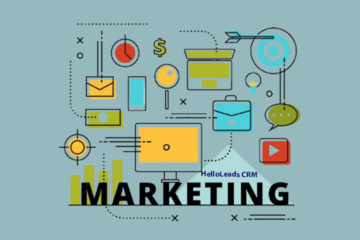
Imagine, you walk into a store, and the first person you encounter is disinterested and uninformed about the products. You will be upset and definitely not recommend the same to your friends. This is the power of first impressions, and so onboarding the customer-facing employees is a crucial step in building a successful business. Whether they are working in sales, customer support, or any other customer-facing role, these employees are often the first point of contact between your company and its customers. To ensure that they are well-prepared for their roles and can make a positive impression, a comprehensive onboarding process is essential.
Here are five tips to help you create an effective onboarding program for your customer-facing employees:
1. Establish a Strong Product Knowledge Base:

Tip: Implement Hands-On Training Sessions for Comprehensive Product Familiarization
Ensure your team is well-versed in your products or services by prioritizing thorough product knowledge during onboarding. Offer in-depth insights through engaging training materials, interactive workshops, and virtual tours.Focus not only on theoretical knowledge but also practical, hands-on experience. This equips your customer-facing employees to provide accurate information and effective solutions, fostering confidence and capability.
Here’s how to make training easy to understand:
- Product knowledge – Equip your tech retail staff with in-depth product knowledge to guide customers effectively, explaining features, specifications, and benefits of each item
- Company values and culture – Immerse employees in your brand’s culture during onboarding. Share the mission, vision, and core values, highlighting how these principles shape customer interactions. This alignment transforms your team into authentic brand ambassadors, fostering genuine connections beyond mere transactions.
- Customer service skills – Through role-playing exercises, employees can simulate a scenario where a customer is dissatisfied with a product. This allows them to practice active listening, empathy, and finding effective solutions.
2. Emphasize Effective Communication Skills:
Tip: Focus on the communication skills of your team during onboarding.
During onboarding, prioritize refining your team’s communication skills. It goes beyond teaching what to say; it’s about how to communicate effectively. This involves active listening, clear articulation, and fostering empathy. Engage employees in open dialogues and offer scenarios mirroring real customer interactions. Role-playing exercises provide valuable practice in handling diverse situations they might encounter in their roles.

Ways to instil empathy in your employees:
- Share stories of successful customer interactions
- Discuss the impact of empathy on customer satisfaction
- Role-play scenarios that require active listening and problem-solving
- Offer ongoing coaching and feedback on empathy and listening skills
Positive language usage:
Encourage a customer-centric approach by guiding employees to avoid saying “I don’t know.” Instead, promote phrases like “Let me find that information for you.” This positive language reinforces a helpful and solution-oriented attitude, enhancing the customer experience.
3. Provide mentorship and shadowing opportunities
Tip: Pair new hires with experienced mentors or offer shadowing opportunities.
Accelerating learning through mentorship is invaluable. Pairing new employees with seasoned mentors or allowing them to shadow experienced colleagues offers invaluable insights into handling customer inquiries, navigating challenges, and applying best practices in real-time situations.
How to facilitate mentorship and shadowing:
For example, in a call center environment, new employees could shadow experienced agents, listening in on calls to understand different customer personas and how to address their concerns efficiently and empathetically.
Role-specific knowledge and tools – Depending on their roles, customer-facing employees may need specific knowledge and tools to excel. Ensure that your employees have the resources they need to perform their tasks effectively.
Easy ways to provide role-specific knowledge:
- Provide examples of successful implementations in other organizations through interactive E-Learning Modules
- Tailor training materials to specific roles
- Offer guidance on using customer relationship management (CRM) software
- Provide a resource library with frequently asked questions
- Encourage employees to shadow experienced team members
- Showcase the effectiveness of virtual reality in customer service training
4. Foster continuous feedback and support

Tip: Encourage an environment of continuous feedback and support.
Encourage a feedback culture by implementing regular reviews from supervisors for new hires. Constructive feedback, alongside support and guidance, cultivates a culture of continuous improvement, aiding employees in refining their customer-facing skills.
How to establish continuous feedback and support:
For example, implementing a feedback system where supervisors provide timely feedback after observed interactions help employees to understand their strengths and areas for improvement. This ongoing support nurtures their confidence in handling customer interactions.
5. Offer resources and ongoing learning opportunities
Tip: Provide access to resources for ongoing learning and skill development.
To meet evolving customer needs, ensure continuous skill development by providing access to resources like online courses, workshops, and updated training modules. Keeping employees updated with evolving customer needs, industry trends, and company updates guarantees their readiness to serve customers effectively.
How to facilitate ongoing learning:
Consider a scenario where a software company provides access to an online learning platform for employees. This resource allows them to engage in courses focused on new software updates or emerging industry trends. Empowering staff with this knowledge ensures they can offer informed assistance to customers, staying ahead in a rapidly evolving landscape.
Encourage continuous learning
Customer service is an ever-evolving field, and ongoing learning is essential for success. Encourage your customer-facing employees to continue developing their skills and knowledge.
Here’s how to promote continuous learning:
- Offer access to online courses or workshops
- Provide opportunities for attending industry events
- Create a culture of knowledge sharing within the team
- Recognize and reward employees who invest in their professional growth
Implementing these five strategies during the onboarding process empowers companies to prepare their customer-facing employees for diverse scenarios, deliver exceptional service, and embody the brand’s values seamlessly.
Share this blog :










